Falconry is one of the traditional cultural practices of many ancient peoples. In their eyes, a tamed eagle is worth more than a thousand gold pieces, as it is “one with the trainer” after years of dedication.
The eagle, also known as the hawk, is not a specific species but a collective term for a group of birds of prey characterized by sharp beaks and claws, large wingspans, and a preference for soaring freely and diving down to hunt.
The reason it is able to hunt alongside humans is that it regards humans as trustworthy partners. This trust begins with the domestication process, which ancient Chinese referred to as “nao ying.”
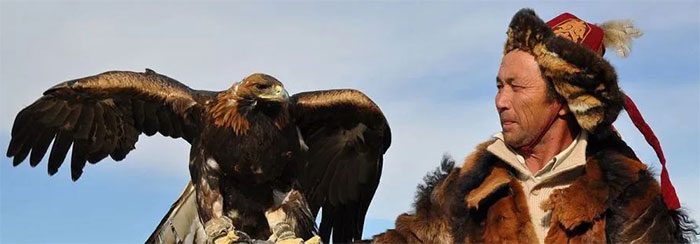
The eagle can hunt alongside humans because it regards humans as trustworthy partners.
In the past, nomadic tribes often used eagles for hunting, a custom that dates back to at least 2000 BC in the Mesopotamian region. This practice later spread to Europe and became popular among the nobility.
With the growing awareness of animal protection, the domestication of eagles has gradually declined as birds of prey have become protected species.
Are there still people who hunt with eagles today? Yes, but the numbers are dwindling.
In 2021, 18 countries around the world (including South Korea) listed falconry as an “Intangible Cultural Heritage of Humanity” recognized by UNESCO. In China, many regions have successfully included local falconry culture in the national intangible cultural heritage list.
In China, while most birds of prey are classified as first or second-level national protected animals, capturing and training eagles is illegal. However, to continue this cultural legacy, eagles can be trained after registration and obtaining a permit.
Falconers typically choose different species based on personal preference and regional availability.
The most popular eagle species include the golden eagle, red-tailed hawk, Harris’s hawk, goose hawk, large falcon, and Saker falcon, while some also prefer to train owls and seabirds.
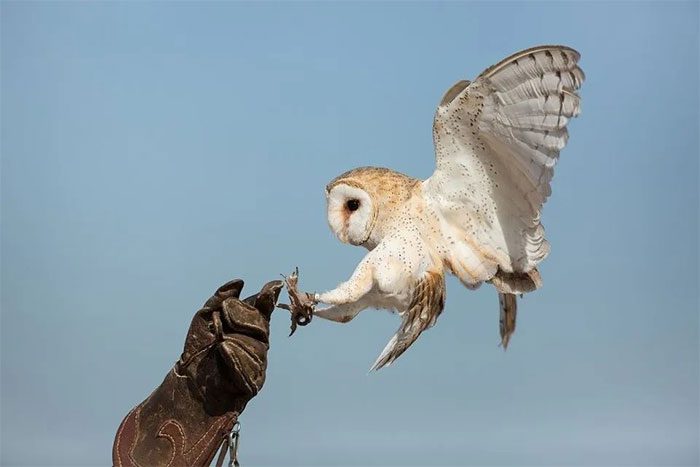
Some also prefer to train owls.
Training Eagles
The methods of training eagles vary among individuals, but they can generally be divided into the following steps: capturing the bird, “nao ying,” and hunting training.
There are generally two ways to acquire a falcon.
- One is to start with a juvenile eagle aged 1-2 years, where they climb cliffs to find eagle nests, wrap the chick in cloth, and bring it home. This method is extremely dangerous due to the risk of falling from steep cliffs, in addition to potential attacks from the mother eagle.
- Two is to capture a wild adult eagle.
Both methods have their advantages and disadvantages. Eagles learn to hunt between the ages of 1-2 years, and human intervention at this stage makes it easier for the birds to accept domestication. Adult eagles require more effort and time to tame due to their strong wild instincts, but the biggest advantage is that they usually have better physical condition and hunting skills compared to those raised by humans from a young age.
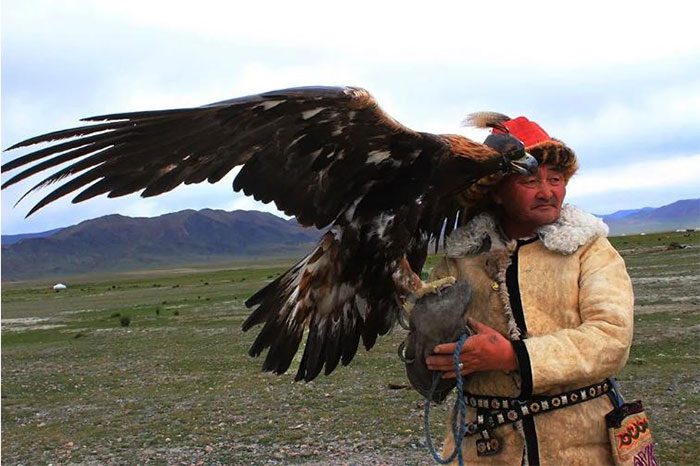
Adult eagles require more effort and time to tame.
Once the eagle is captured, its eyes are covered to help it remain calm. Some trainers use special leather eye masks, while others are more ruthless; for instance, the Naxi falconers (also known as the Naxi people, an ethnic group primarily residing in the southeastern Himalayas in northwestern Yunnan, as well as southwestern Sichuan in China) used to sew the eyelids and “open the eyes” before commencing the “nao ying” process.
The next step is “nao ying,” a battle of wits between the human and the eagle. “Nao ying” involves finding ways for the eagle to accept the trainer as a partner for cooperation.
There are many ways to carry out this process, but the sole objective is to wear down the eagle’s will by preventing it from eating, drinking, or sleeping, forcing it to accept human presence. Generally, this process lasts for 7 days, with the quickest being 3-4 days and the longest up to half a month. During this time, the eagle remains awake, always near its trainer, so it recognizes them as its owner as soon as possible.

“Nao ying” is a battle of wits between the human and the eagle.
The Naxi people primarily practice “nao ying” by placing the eagle on their gloved arm. They take the eagle to various locations where many people gather, helping it adapt to human presence.
In contrast, the Kyrgyz people (a Turkic ethnic group primarily residing in northern Central Asia, and the main ethnic group of Kyrgyzstan) use a more brutal method.
First, they fill a reed with water and insert it into the eagle’s stomach (making it void its stomach), then place the eagle on their arm, preventing it from sleeping for 5 consecutive days and nights.
The Kyrgyz place the eagle on a special device made of two wooden beams connected by a rope for the eagle to stand in the middle.
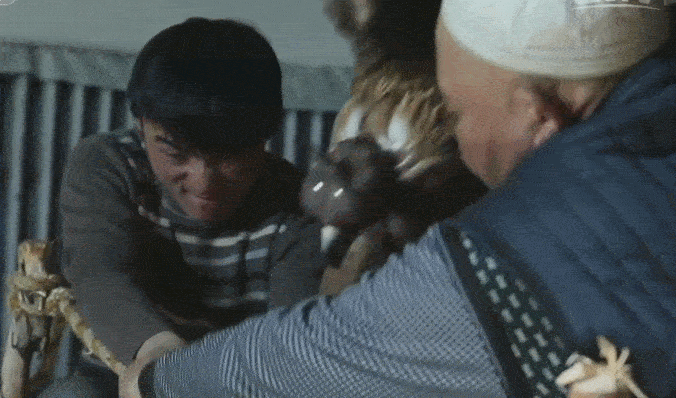
The “nao ying” process of the Kyrgyz.
The eagle stands on the rope, while the trainers continuously shake the rope or wooden beams, aiming to make the eagle unsteady for several consecutive days without food, except for water, to keep it alert. They also splash cold water on the eagle’s head.
The eagle will not eat meat until it collapses from exhaustion and the trainer touches it. If the eagle accepts meat from the trainer’s hand, the “nao ying” process is considered successful. The Naxi call this step “kai sheng.”
To maintain the eagle’s optimal condition, the Naxi control its weight through food intake, while the Kyrgyz control the eagle’s weight by inducing vomiting.
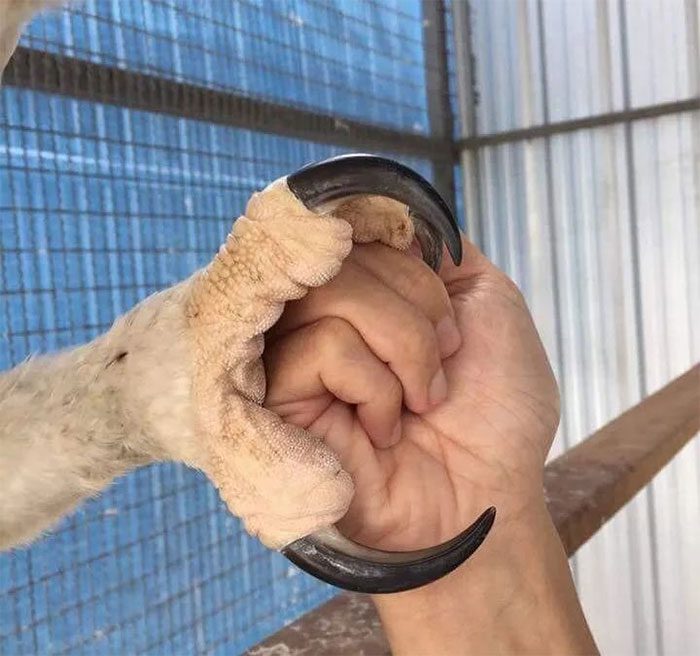
After the “nao ying” step, where the eagle has accepted the human, the hunting training begins.
The initial phase of training involves “calling the bird,” where the trainer will take the eagle back to nature, and simply by whistling, the eagle can fly back from a distance to eat meat from the trainer’s hand.
In the later stages, training focuses on hunting techniques, including familiarizing the eagle with hunting alongside dogs, flying to wherever the trainer points, identifying, chasing, and catching live prey…
The “nao ying” process is brutal, and training the eagle is even more arduous.
The duration of eagle training is lengthy, potentially taking several years. If the eagle is raised from a young age, it may take four years for complete training. During the training process, trainers are at high risk of injury.
Above all, this process is very costly. The specific costs vary depending on the species and trainer, but it is not uncommon for the total expenses to exceed $10,000 (over 236 million VND).
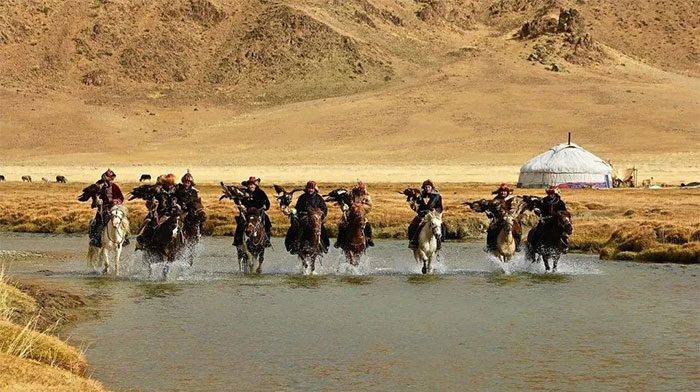
The process of training eagles is very arduous.
Releasing Eagles Back into the Sky?
According to traditional customs of falconry, the partnership between eagles and humans for hunting is limited in duration.
After many years, the Kyrgyz will feed the tamed eagles sheep meat and then release them, as this allows the eagles to reproduce freely, ensuring that their descendants can continue this ancient tradition.
The Naxi often release their eagles back into the wild in February, after using them as hunting tools for one year. They believe this is the least impactful method of domestication on nature.
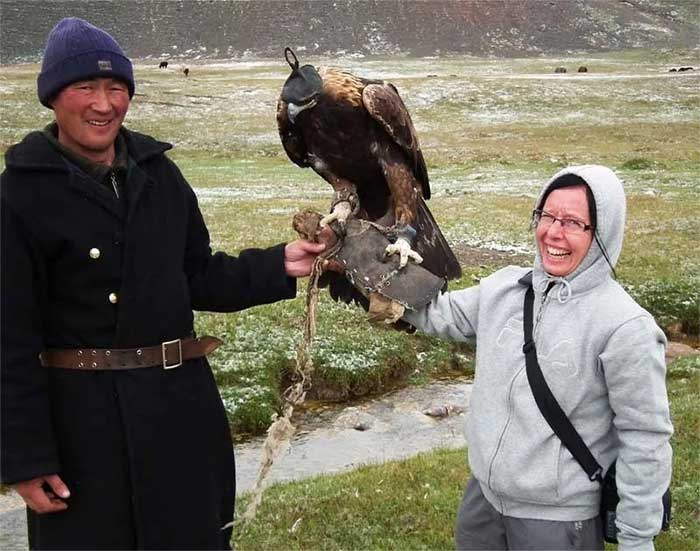
Today, eagles are increasingly developed into pets or used for tourist photography.
Today, eagles have undergone significant changes; they were once used for hunting, and now they are gradually evolving into pets or being provided for tourists to take photos at a fee, leading the Naxi to require only 3 months to train their eagles.
Despite the rules, due to the benefits, more and more falconers are abandoning traditional practices; they no longer wish to release tamed eagles back into the wild, and some even sell them directly.
In 2010, in China, an untrained goose hawk could be sold for 5,000 CNY (approximately 16,500,000 VND), while a trained chick could reach prices between 10,000 to 20,000 CNY (over 33,000,000 to 66,000,000 VND).


















































